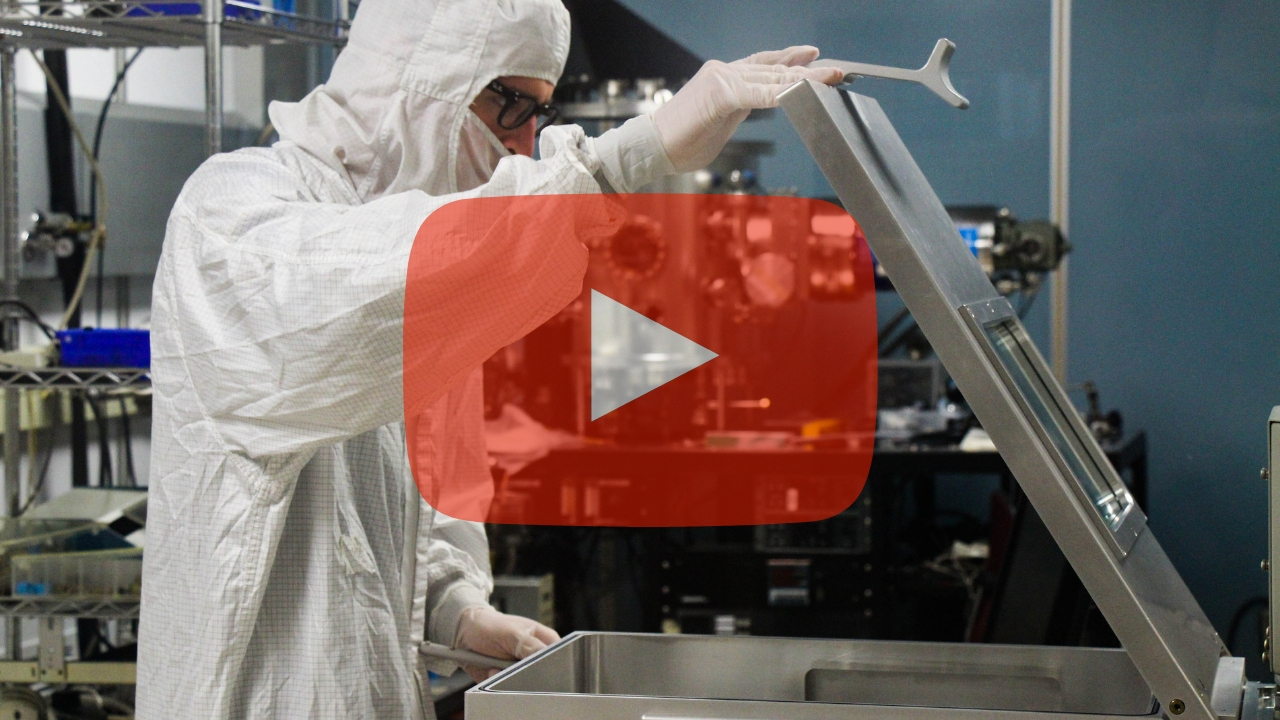
Video: Learn about CORE’s Microfabrication Cleanroom at FIRST
Dr. George Bernhardt of the CORE Microfabrication Cleanroom showcases cutting-edge sensor research and technologies being developed by UMaine researchers and students.
The CORE Cleanroom provides unique, hands-on training opportunities for students entering careers in STEM fields.
FIRST Cleanroom Video Transcript
Coordinated Operating Research Entities (CORE)
A tour of UMaine’s CORE Microfabrication Cleanroom FIRST Lab – Frontier Institute for Research in Sensor Technologies
George Bernhardt:
You’re looking at a Class 1000 cleanroom. That means there’s 1000 particles per cubic foot of air that are 0.5 microns in size or larger. It’s a very clean environment with a laminar airflow to remove particles. We are creating medical devices that can be used for testing blood, testing intracellular fluid. And what these are is really tiny needles that can be pressed against the skin and extract a fluid. And then you can get some health information.
This is the patterns that she makes. She makes all these different types of patterns because we’re testing to see which one of these different patterns on this mass are optimal, which one works the best.
Bailey Bartash:
We were looking at using these kinds of devices for DNA detection for cancer testing and diagnosis. Normally you test for cancer using a tissue biopsy which requires a sample of a tumor from a patient. The type of cancer that we are most interested in is pancreatic cancer because normally it’s diagnosed with stage four – and the DNA would be in your blood long before that. This would hopefully be a way to detect cancer earlier, more efficiently and less invasively, more accurately for the patient.
George Bernhardt:
We’re also creating new types of sensors. Little tiny sensors that can go into very harsh environments: power plants, space, jet engines. And what these do is allow us to monitor the health of power plants so they operate at the proper temperature, so that they are efficient, so that we reduce emissions.
The cleanliness is important because the scale we are working with is down to the nanometer scale. If you have one hair get on it, one piece of dust, you can ruin an entire pattern.
We have both graduate and undergraduate students that work in this cleanroom. It is all state-of-the-art. A person could learn from here, learn how the systems work. They could then go do their own research at a different university or they can go into industry and they’re ready to go right into the workforce. They will not need that extensive training because they already know how to use all these different pieces of equipment.
